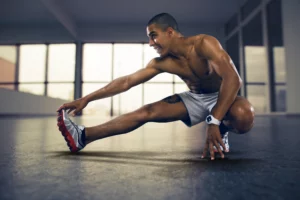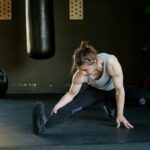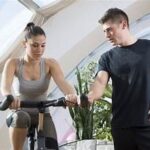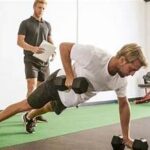The fact that the deadlift is such a brutal test of physical and mental power is one of the reasons
why many lifters either love or hate it. There are no ambiguities. The bar either rises off the
ground or it doesn’t.
A multi-joint exercise, the deadlift works the hamstrings, quadriceps, glutes, calves, core, and
back. It is among the best workouts for boosting strength and muscle mass.
Continue reading to find out more about the correct deadlift setup, form, and best practices.
Before performing a deadlift, center the bar
The bar must stay close to the body and move as little distance as possible to perform your
largest deadlift.
Most individuals place the bar in the middle of the forefoot rather than the middle of the entire
foot, which is incorrect. It ought to cut through both of the foot arches. When everything is set up
properly, your shins will be quite close to the bar; you might only be an inch or two away before
bending to grab it.
Before you deadlift, work on your grip
One weak link in the chain can stop progress, and grip is frequently the weak link. Your lift will
be stronger the tighter your hold is. If you are unsure of your grasp, your nervous system won’t
recruit the greatest amount of muscle mass.
On a weight, you’ve previously been unable to lift, try utilizing straps. If it lifts easily, you know
that your grip was the problem, not your overall strength.
Deadlift first, then pin the bar to yourself
You must keep the bar as near to you as you can during a deadlift even though there should
never be a “hitch” up the thighs. Throughout the exercise, this entails maintaining consistent
touch with your legs. If you maintain the bar near enough to your torso, it may cause the
occasional shin scrape.
Get the deadlift setup right
Your hip range, the height from which you can grasp the bar with a neutral spine, and your
posture will all affect how you set up for a deadlift.
Try a traditional deadlift stance if you are lifting from the floor, and then feel your spine. Great if
it is unbiased. If not, adjust your feet such that you can grasp the bar while maintaining a neutral
spine. Try a semi-‘sumo’ posture if you are unable to do so without flexing your spine.
Heavy deadlifts aren’t always preferable
To develop the best technique for the deadlift, you must practice. If you don’t practice, this
advice will be useless. As they say, perfect practice makes perfect; practice doesn’t make
perfect.
Even with smaller weights, executing high reps will cause your deadlift to become fatigued. You
would be better off doing modest repetitions with the lighter weight in this situation and stopping
long before any technique failure.
Your deadlift depends on proper breathing
The deadlift involves a lot of stability and intra-abdominal pressure; thus good breathing
technique is crucial.
Concentrate on taking long, deep breaths and exhaling while feeling your ribcage and
diaphragm expand. Practice bracing by lying on your back, inhaling deeply for a long time, and
exhaling slowly.
Make sure to make each repetition of this three to four times bigger and deeper. On the final
rep, take a deep breath and hold it for five to ten seconds. You can now brace yourselves for
the main lifts.
Don’t drop your deadlifts
As you lessen the weight, maintain control. Just as crucial as the initial lift off the floor is the
eccentric phase of the deadlift (when you lower it). When you lower your deadlift from the top,
you run the danger of hurting yourself in addition to decreasing your time under stress.










